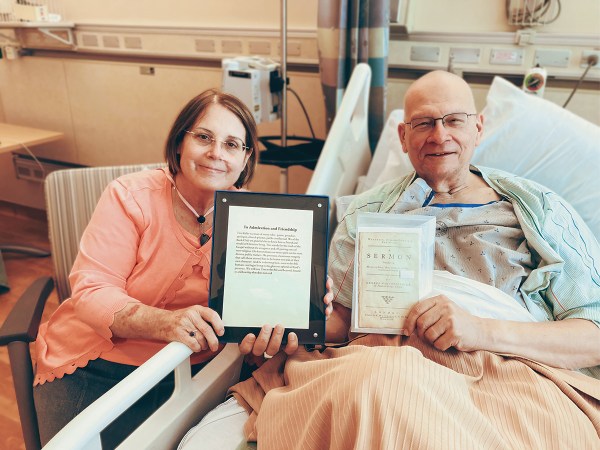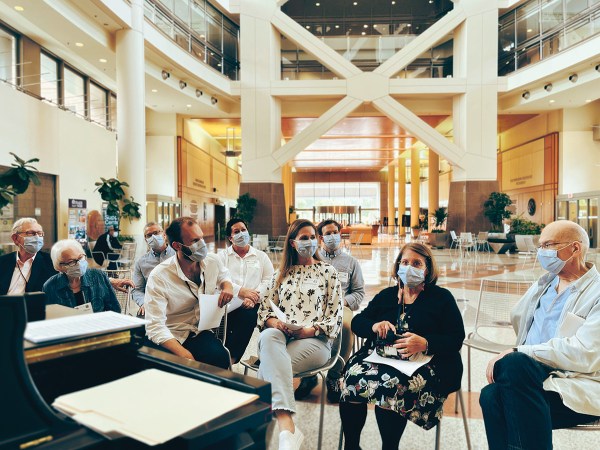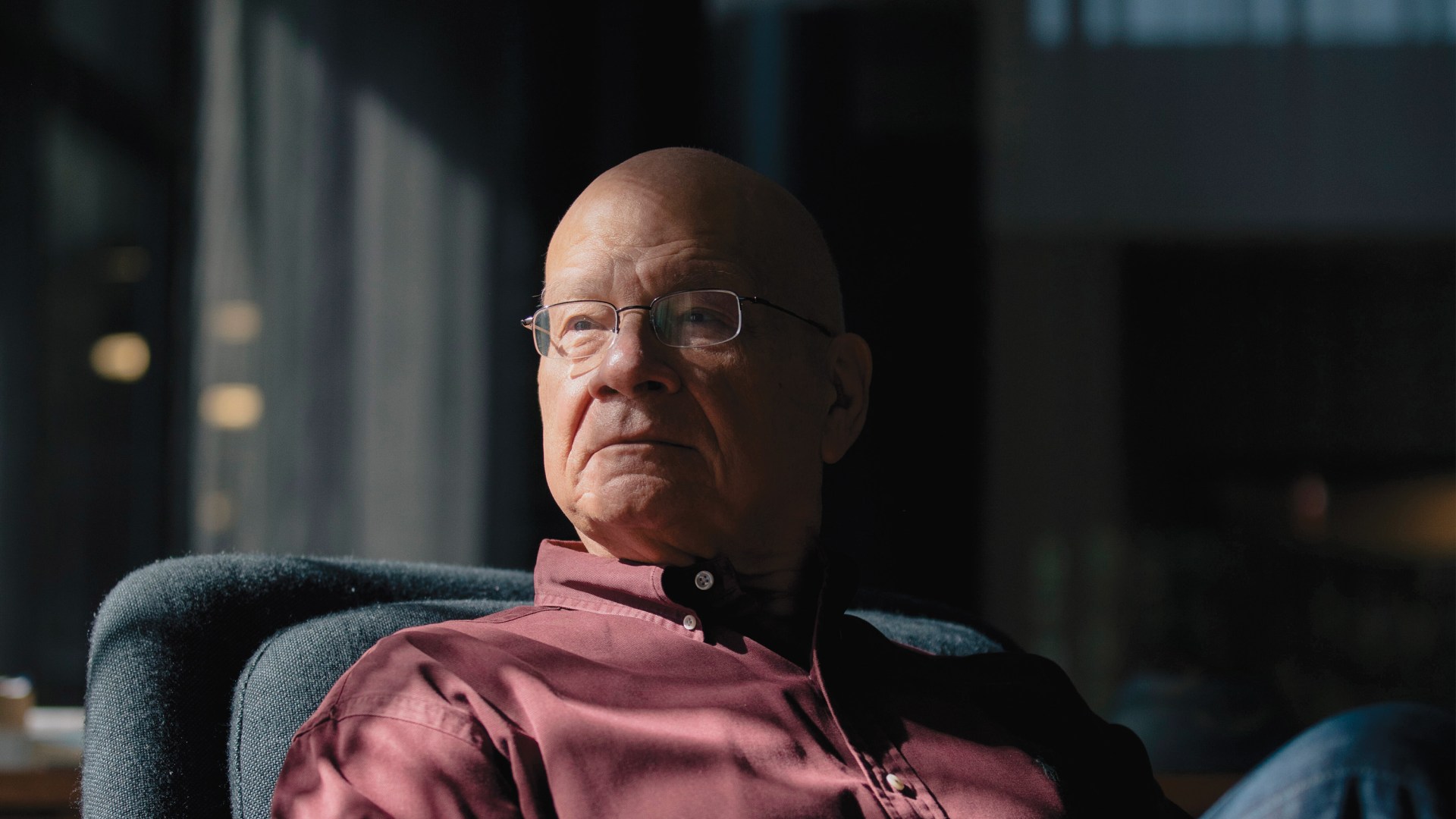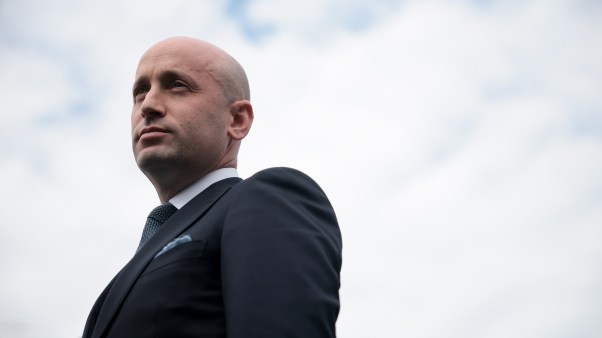It was June 3, 2020. The subject line of the email from Kathy Keller made my heart sink: “Tim’s got pancreatic cancer.” The diagnosis was stage IV. With current therapy, life expectancy is less than a year. There is no stage V. Thus began a three-year journey that explored the cutting edge of experimental cancer therapeutics—but more significantly, the courageous approach to terminal illness by a man of deep faith.
Tim had been my friend for a decade. In the early years of BioLogos, he agreed to cohost intensely interesting and productive meetings in New York, where deep discussions about the complementarity of science and Christian faith took place. Though we didn’t completely agree on everything, Tim became my most significant spiritual mentor.
But now I was in a different role. As a physician-scientist and the director of the National Institutes of Health (NIH), I reached out to help him and Kathy sort through the options for interventions. Chemotherapy can sometimes help pancreatic cancer, but only for a time. On the horizon, however, are new approaches called “precision oncology”—characterizing the unique DNA mutations in the patient’s cancer in exquisite detail and then teaching the body’s immune system to recognize the masked intruders.
Tim and Kathy, his partner in life, love, and faith, weighed the pros and cons and elected to sign up for an NIH clinical trial that had shown some initial promise for advanced breast and gall bladder cancers but for which there was so far very limited experience with pancreatic cancer. Tim was clear-eyed about the likelihood of benefit, but he wanted assurance that whatever happened, the medical research team would learn from it and be able to advance the protocol for the next time and the time after that.
Those assurances having been provided, he came to NIH for an operation to capture some of the cancer tissue so its specific and unique DNA mutations could be identified. A few of these misspelled proteins might make good targets for an activated immune system, should traditional therapy fail—as it almost certainly would.
Meanwhile, high-dose chemotherapy was started—one week on, one week off. The weeks where toxic drugs were administered were rough, but I never really heard Tim complain. The recovery weeks saw him intensely engaged in writing, teaching, leading church planting activities, and counseling many who reached out to him for comfort and advice.
Nine months into treatment, he wrote a powerful article in The Atlantic: “Growing My Faith in the Face of Death.” In deeply honest prose, he described the struggle of coming to terms with his own mortality. He described the disciplines that carried him through this dark valley, coming to a greater confidence in the death and resurrection of Jesus than he ever had. Summing it up, Tim wrote, “I can sincerely say, without any sentimentality or exaggeration, that I’ve never been happier in my life, that I’ve never had more days filled with comfort. But it is equally true that I’ve never had so many days of grief.”
 Courtesy of Francis Collins
Courtesy of Francis CollinsChemotherapy worked better for Tim than it often does for pancreatic cancer, providing many months of stable disease. But then in the spring of 2022, the drugs stopped working, and the beast was unleashed—dozens of liver tumors began growing rapidly. Survival appeared to be measured in just a few short weeks.
Tim and Kathy came to NIH for the experimental immunotherapy trial. Billions of his own immune cells isolated two years earlier and programmed like little “ninja warriors” to search and destroy the cancer cells, were infused. The battle was joined. It was dramatic; for several days every part of Tim’s body was wracked with the consequences. He suffered hallucinations that were terrifying, but never wavered in his determination to press on.
And bit by bit, his characteristic calmness and gratitude reappeared. As he began to heal, he wanted less to talk about cancer and more to talk about faith, love, truth, and beauty—and about the deep ache he felt for the state of the Christian church in America. If you have not read his sobering treatise on GospelinLife.com, “The Decline and Renewal of the American Church,” written in the midst of cancer treatment, you will find there a compelling diagnosis and treatment for the church’s current malaise.
Being with Tim Keller during this time was a gift of profound significance to all of us who were able to be connected. As an NIH physician, I was able to spend periods of time in his room. Tim, Kathy, and I had intense discussions about how our society seems to have lost its anchor to the truth that Jesus says will set you free, and Tim strongly encouraged me to map out a book on this topic. I told him it was too bad he had to get cancer so that I could learn more from him.
He continued to be a profound contributor to virtual groups that met regularly, and a group of his book club friends sent him a special gift to reflect their deep love and admiration. The gift was an original printing of a 1739 sermon from George Whitefield (a favorite preacher), and a framed copy of words written by the late Michael Gerson, ending with this: “We will love Tim in this life and beyond, bound in a fellowship that does not end.” Amen.
Six weeks later the scans showed a response to the immunotherapy that was much better than any of us thought possible. The tumors in the liver had just melted away. I sent an email to friends with the subject line “This will make you shout for joy.” We all shouted and gave thanks. I showed the scans anonymously to a few other docs, and they were slack-jawed in amazement. Could this be a cure?
A sweet period of several months ensued. Tim was in full productivity mode. But the beast reemerged. Of the billions of cancer cells that had been vanquished by the therapy, a few rogues had escaped. The immune system could no longer see them. They grew with wild abandon. A second cancer cell target was identified, another plan was implemented to educate the immune system to go after it. Tim and Kathy returned to NIH for another month-long admission, but this time there was no dramatic response, and Tim was growing weaker.
 Courtesy of Francis Collins
Courtesy of Francis CollinsIt was a Saturday in April near the end of Tim’s NIH hospital stay. I knew this might be the last time I would see him. It felt like a time to come together for worship. I suggested an impromptu service in the spacious atrium of the NIH Clinical Center on Sunday afternoon and asked Tim if he had any favorite hymns to suggest. I should have known that would not get an off-the-cuff response. “Yes,” he said. “Let’s sing six hymns in a particular order, because they tell the whole story of Christian faith and God’s care for us.” I rounded up some others to join us. Despite my occasional wrong notes on the piano, we had one of the most memorable services of my life. Tim explained the choice of hymns:
“Immortal, Invisible, God Only Wise”
A tremendous depiction of God’s attributes. Tim particularly wanted us to take note of that final line: “’Tis only the splendor of light hideth thee.”“And Can It Be That I Should Gain”
A reflection on how we connect to God and have a personal relationship with him. Tim sang the bass part.“How Firm a Foundation”
God’s Word, in good times and bad. This was Kathy and Tim’s wedding recessional. Tim was firm about the right tune to use (Lyons).“Jesus Lives and So Shall I”
A quiet but profound hymn about hope for the future. “Jesus lives and is now but my entrance into glory.”“Glorious Things of Thee Are Spoken”
A proclamation that Zion, the church, was founded on the Rock of Ages.“For All the Saints”
We will all be gathered at the end.
Kathy and Tim said this was the first time they had been able to worship with others in person in three years. No one who was there will ever forget it. Kathy decided that those hymns would be sung at Tim’s memorial service.
To conclude the service, we sang one more song, “There Is a Redeemer,” that Kathy had suggested. Only then did Kathy and Tim tell us that this praise song was sung after every service for the first few years Tim pastored Redeemer Church. The last verse is this: “When I stand in glory, I will see his face, and there I’ll serve my King forever, in that Holy Place.”
Tim, you are standing in glory now. You are seeing his face and serving him, as you did here on earth. Someday, God willing, we shall see you again in that Holy Place.
Francis Collins is the founder and senior fellow at BioLogos and former director of the National Institutes of Health.















